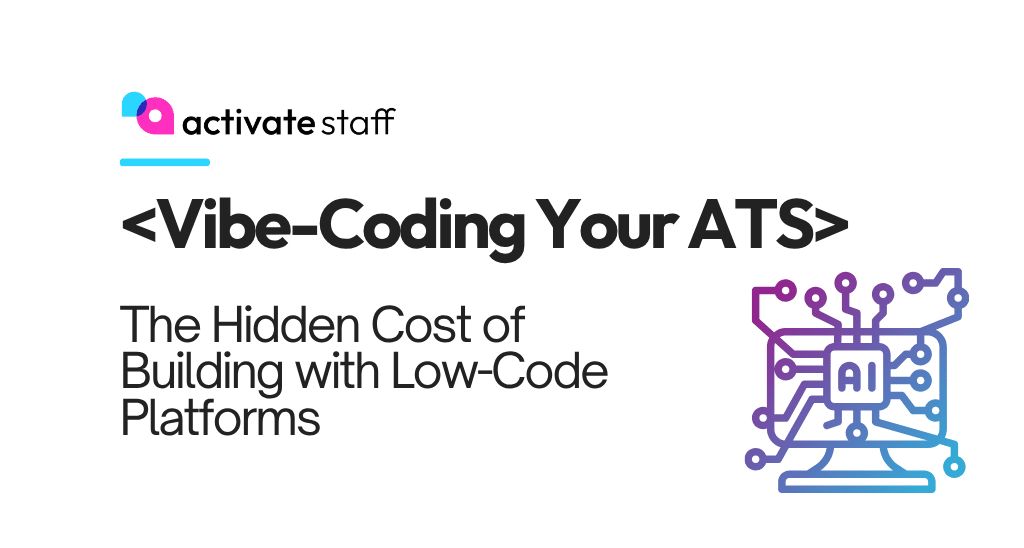In December 2022, Activate’s CEO Rohan sat down with a panel of industry experts to discuss the impact of staffing platforms in the healthcare industry. During the conversation, travel nursing expert Bob Livonius highlighted his prediction of a “per diem renaissance” driven by the adoption of this technology.
The healthcare industry has been facing an ongoing crisis due to burnout, turnover, scarcity of potential educators and an aging workforce (just two weeks into 2023, nurses at two hospitals in New York went on strike). In this blog, we will explore how technology is predicted to enable a per diem staffing revolution and why agencies that don’t adapt will be left behind.
The current state of the healthcare industry
Long before the start of the pandemic, the industry had been warned of an impending nursing shortage crisis. But the effects of the last few years have altered the course of healthcare, leading many nurses to experience fatigue from chronic overwork. According to the Bureau of Labor Statistics (BLS), approximately 500,000 nurses will elect to retire over a couple of years.
That leaves a shortage of around 1.1 million nurses and a lot of healthcare facilities scrambling to find qualified staff to fill vacancies.
Per diem staffing: the key to filling the void in healthcare
In 2021, the global per diem nurse staffing market was estimated to have reached USD $7.7 billion. The newly released report shows the global market is estimated at $8.1 billion in 2022. It is predicted that it will continue to grow at a compound annual growth rate (CAGR) of 5.4% in the next 10 years. By the end of 2032, the market is expected to reach $13.8 billion.
Healthcare facilities turned to per diem staffing in greater numbers to rapidly solve the issues caused by unscheduled absences, staff shortages and sudden influxes of patients. Between September 2020 and December 2020, nursing staffing demand (for both per diem and travel nursing) grew by 245%. As they can be scheduled on an as-needed basis and are not part of the regular workforce, per diem nurses offer a flexible solution for healthcare facilities. This makes them a great option for addressing last-minute staffing needs and ensuring continuity of care for patients.
During the pandemic, travel nursing was another area of temporary healthcare staffing that boomed. While they are both types of temporary staffing solutions, travel nursing typically involves assignments that last for several weeks or months and requires the nurse to relocate. But per diem’s shorter assignments (that range from a few hours to a few days), no relocation requirements and rapid time-to-fill placements mean healthcare facilities are able to adapt quickly to changes in patient volume or staff shortages.
More nurses want flexible work options
In Gale Healthcare Solutions’ survey in October 2022 of 501 clinicians, they found that their nurses are increasingly looking for more flexible work options. 65% of their respondents reported only working temporary shifts. And while most respondents chose flexible work, 45% are working full-time schedules through exclusively temporary jobs.
Nurses want more flexibility and control over their work schedules. It helps them balance their professional and personal lives. And this demand for flexibility aligns with the rise of staffing platforms, which have made it easier for per diem staffing agencies to connect nurses with healthcare facilities.
Technology advancements bridge the gap in per diem staffing
In the years before the upsurge of staffing platforms, hiring per diem staff was considered a time-consuming and labour-intensive process. It relied heavily on traditional staffing methods such as phone calls and in-person interviews and didn’t provide the same benefit as staffing longer-term placements. Staffing platforms completely revolutionized the industry, streamlining the process of finding, onboarding and scheduling staff with a few clicks on a mobile device.
The increase in transparency and communication brought on by this new tech has been met with positive feedback from candidates, staffing agencies and healthcare facilities alike. The difficulties finding jobs and temporary staff have been alleviated. It made it easier than ever to plan and manage so many shifts on a schedule.
According to Bob Livonius, with the increase in popularity, per diem rates are becoming very competitive. Technology has enabled this shift-based, on-demand staffing in a way that just wasn’t feasible before and agencies should be prepared for how this may impact their business.
It’s time for staffing agencies to diversify their placements
In order for a business to best position itself for growth or survival, it should always look for ways to diversify its offerings. By expanding services to include multiple facets of the healthcare industry, staffing agencies can increase their revenue streams and attract new clients. This makes them more resilient to changes in the market and any downturns.
While per diem was once considered a difficult market to enter due to its fast-paced nature, staffing platforms have given agencies a means to simplify the entire process. As the technology becomes more advanced and more agencies adopt the tool, there will be an increase in agencies that are able to place per diem workers on a massive scale.
According to a report by Persistence Market Research, the United States’ per diem staffing market is expected to reach US$ 6.2 billion by the end of 2032. Already, Aya Healthcare, North America’s largest travel nursing agency, has launched Shifts, a platform catered specifically to per diem staffing.
Some other examples of per-diem platforms include:
Without a platform, agencies will begin to lose market share to competitors with a platform-based model. As Bob Livonius pointed out, a per diem renaissance is well on its way. And agencies with staffing platforms will lead the resurgence.
To learn more about this trend and how staffing platforms are enabling this revolution, book a meeting with our team.





